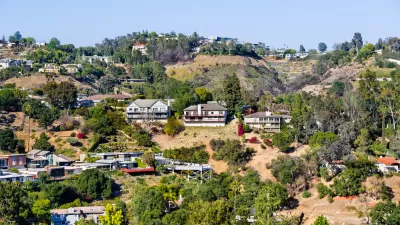A new report documents the rise of payments in lieu of taxes (PILOTs) made by non-profits to cities desperate for new revenue. Although they've gained notice by cash-strapped cities, the report indicates PILOTs typically generate little revenue.
As we noted previously, the use of PILOTs to help fill city coffers is on the rise across America. A new report published by the Lincoln Institute of Land Policy, "Payments in Lieu of Taxes by Nonprofits: Which Nonprofits Make PILOTs and Which Localities Receive Them", and authored by Daphne A. Kenyon, Adam H. Langley and Patricia C. Bailin, "provides far more detail on these voluntary payments than was previously available in any single source."
"Although many more municipalities are considering PILOTs," notes the Lincoln Institute, "the report
provides a reality-check for anyone expecting them to be a panacea for
cash-strapped cities and towns. For the typical locality receiving
PILOTs, these voluntary payments account for only 0.13 percent of
general revenue. That's the same amount that local governments raise
from charges for parking meters and parking lots."
"Sometimes the
debate surrounding PILOTs can seem a lot bigger than the dollars
involved," said Adam H. Langley. "PILOTs simply don't generate enough
revenue to be a panacea for cash strapped cities and towns, and concerns
that these payments will seriously undermine nonprofits' financial
health seem exaggerated since these payments are voluntary-nonprofits
can say ‘no'-and are typically much less than what nonprofits would pay
if taxable."
FULL STORY: Top cash-strapped cities turning to PILOTs

Maui's Vacation Rental Debate Turns Ugly
Verbal attacks, misinformation campaigns and fistfights plague a high-stakes debate to convert thousands of vacation rentals into long-term housing.

Planetizen Federal Action Tracker
A weekly monitor of how Trump’s orders and actions are impacting planners and planning in America.

In Urban Planning, AI Prompting Could be the New Design Thinking
Creativity has long been key to great urban design. What if we see AI as our new creative partner?

King County Supportive Housing Program Offers Hope for Unhoused Residents
The county is taking a ‘Housing First’ approach that prioritizes getting people into housing, then offering wraparound supportive services.

Researchers Use AI to Get Clearer Picture of US Housing
Analysts are using artificial intelligence to supercharge their research by allowing them to comb through data faster. Though these AI tools can be error prone, they save time and housing researchers are optimistic about the future.

Making Shared Micromobility More Inclusive
Cities and shared mobility system operators can do more to include people with disabilities in planning and operations, per a new report.
Urban Design for Planners 1: Software Tools
This six-course series explores essential urban design concepts using open source software and equips planners with the tools they need to participate fully in the urban design process.
Planning for Universal Design
Learn the tools for implementing Universal Design in planning regulations.
planning NEXT
Appalachian Highlands Housing Partners
Mpact (founded as Rail~Volution)
City of Camden Redevelopment Agency
City of Astoria
City of Portland
City of Laramie



























